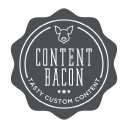
How I Started A $130K/Month Healthy Meal Delivery Service Before That Was “A Thing”
Hello! Who are you and what are you working on?
My name is Cesar Quintero and I’m the founder of Fit2Go Now it's known as FTG Kitchen, which I started in 2005. Our vision is to make it easy for professionals to eat smart and lead a healthy lifestyle by removing the obstacles to meal planning. A hectic professional schedule can make it a real struggle to find variety, nutrition, and value in a meal, and that’s the issue we solve.

Fit2Go makes selecting and receiving food simple via our online ordering system, and we make sure meals are always fresh and diverse thanks to our revolving 8-week menu. Our options are all chef-designed and backed by a dietitian to create a “heart smart” menu free of preservatives and MSG—we add the right blend of culinary skill and science into the mix.
Our model gives the customer the freedom to customize their meals, change dishes at no extra cost, and order on a per-meal basis, with no contract necessary. We also have an excellent customer support team which helps with any questions or needs a buyer might have.
We currently deliver over 650 meals per day, employ 23 people, and have revenue over $1.4 million. Our revenue growth has been consistent at more than 34% annually during the last five years, with around 80% of that based on referrals.

What's your backstory and how did you come up with the idea?
I have an engineering degree and a corporate marketing background, and worked as a production engineer in Venezuela, specializing in logistics and project management. I also spent four years as a marketing manager in R&D for Proctor and Gamble in Latin America.
Three factors combined to fuel my move to Miami in 2005 and change my career path. First, things were economically tough in Venezuela. Second, I wanted to start a business. And finally, while I’d found weight management to be a lifelong struggle, the corporate lifestyle made it even more difficult. A hectic work schedule basically gives you two options—grab something from the vending machine or hit a fast food joint.
For a long time, I thought that being a good leader meant feigning total strength and confidence. This is a big problem with first-time and even many seasoned entrepreneurs—those negative connotations around the positive concept of vulnerability.
I gained around 30 pounds while being stuck in that cycle. And it was only when I consulted with a dietician and combined that advice with exercise and well-balanced nutrition that I saw real progress. I decided to start a business where I could help other professionals make that breakthrough.
It was a passion project at first because I had no experience in the food industry and really no clue what I was getting into. I always had full confidence that my idea would succeed, however, and I committed fully to my vision by sinking all of my savings into it. It was a crazy period for me at 24 years old—I moved to a new country, got married, and started my first business, all at the same time.
This wasn’t easy but I felt invincible at that age—and I was certainly a bit naïve. I had assumed that once I developed the website and pressed “play,” the customers would just appear. Turns out, it doesn’t work that way. So, I initially spent a lot of time educating potential customers and wooing early adopters of what is now a very established meal delivery industry.
Where the market was at that point was a challenge, but it also gave me a real opportunity. Fit2Go was one of the first companies to offer to-your-door meal delivery and the market eventually validated both the idea and my faith in it.
Take us through the process of designing, prototyping, and manufacturing your first product
Fit2Go is all about conveniently delivering the highest quality food to the customer, so that’s where I started with product design. Consulting with a dietician had made a huge positive impact on my eating and lifestyle but it also takes time to go and speak to that kind of professional. That’s a pitfall I wanted my customers to avoid.
I decided to make that benefit part of my product. When you order with us, you get a dietician’s expertise into the bargain. Every meal’s ingredients were informed by guidelines from the American Heart Association and the American Dietetic Association. I had a chef and a dietician craft our first menu and standardize every recipe to the same level of nutritional quality. Where things* weren’t* standard was the variety.
My original goal was to offer 13 weeks of different meals to prevent boredom and keep people excited about what they were eating. We had a sample group of 25 people test all our menus; we delivered the food and they gave us feedback. This wasn’t just a great way to test different flavor palettes, it also helped us rethink our target audience.
Initially, I’d had CEOs and high-income types in mind. However, it turns out that executives tend to go out to lunch quite a bit. And our sample group showed us that the original menu choices weren’t ideally suited to who our actual core customer was and the kind of comforting, flavorful fare they wanted. That feedback helped us adapt the menu and better prepare for Fit2Go’s official launch.
Our distribution model operated under a three-hour delivery margin because we were only dealing with the freshest foods—no “freeze now, cook later” stuff. Try to imagine delivering up to 1,300 meals to the entire Miami Dade Metro area, all within 3 hours!
It was a logistical nightmare, but that's where my process engineering background paid off. We designed a software program that effectively routed orders. And we placed meal preparation and delivery locations in densely packed urban centers to make the delivery efficient enough to meet that time threshold.
Describe the process of launching the business
Financially, starting the business cost about twice as much as I expected. I had $150,000 on hand, which I thought would be enough to get things off the ground. For example, my initial 6-month estimate of building out our kitchen turned into a year-and-a-half project—and that was all while paying rent and struggling to get the right permits. Eventually, my family and friends helped me fund it all.
This was 2005, and launching and marketing the business was a very different experience back then. There was no Facebook as we now know it; no Instagram, Twitter, and the like. So, we went door-to-door, used referral programs, leveraged Groupon, and just networked like crazy. We also offered healthy-lunch-learning experiences to companies and educated prospects through a blog and a newsletter. A world without today's social media meant we had to get out there and work to build those relationships in an old-fashioned way.
A big catapult for Fit2Go was our originality as a service. Healthy meal delivery was new, it was useful, and we were on the bleeding edge of a developing industry. People liked the product and service, and that created a lot of positive word of mouth in Miami.
Hiring friends and family to fill positions can be tricky. If you want harmony behind the scenes, you must clearly define three things: what the business stands for, how it’s going to achieve it, and what everyone’s role is.
Since launch, what has worked to attract and retain customers?
Part of keeping customers is accepting that today’s market for quick, healthy food is a very competitive place. You have to be a cut above to stand out. That’s why I put education and innovation at the top of our priorities. Providing that kind of value sees people continue to order from us.
We also routinely offer promotions to keep customers engaged; you can visit our site to see which promos we’re currently running. For example, customers with automatic renewal can enjoy 10 percent off, or there’s our 20-Day Challenge which can save close to—or over—$100 for daily lunch and dinner, depending on the package. If a customer orders for three weeks, they get a fourth week free.
Beyond promotions, it’s really about having a marketing message that resonates and focusing on education. The latter not only keeps people interested in Fit2Go but excited and engaged about their wellbeing. We also make our services easy to understand, such by producing this video which educates viewers on who we are, what we do, and how you can order from us:
It’s just another little nod to the convenience that breaks everything down and makes using our service simple.
How are you doing today and what does the future look like?
The company’s quarterly surveys for the last four years have yielded incredibly positive feedback ratings, with a 95 percent on customer service, 96 percent on delivery service, 85 percent on flavor, and 87 percent for overall satisfaction. Also, profits have increased by at least 200 percent annually during the last 3 years by improving systems and lowering costs.
Our sales are all conducted online and our target is to improve every measurable online conversion metric. Right now, Fit2Go’s focus is on serving the Miami-Dade area. We don’t have any plans to branch out into new territories. We like to keep it local, and when “local” translates to a metropolitan area of 6,137 square miles, that’s plenty of ground to cover and room to grow.
Through starting the business, have you learned anything particularly helpful or advantageous?
I learned a lot of lessons starting Fit2Go. Here’s one key piece of advice to other entrepreneurs who are thinking of starting a food business: always find a kitchen that’s already built and with all the permits in place! It will save you a lot of time and money. Trust me on this.
Probably the greatest lesson I learned and the one I’d want other entrepreneurs to embrace is this: never be afraid to be vulnerable as a leader. That doesn’t mean weak. It doesn’t mean you’re open to attack, nor does it mean people can walk all over you. For a long time, I thought that being a good leader meant feigning total strength and confidence. This is a big problem with first-time and even many seasoned entrepreneurs—those negative connotations around the positive concept of vulnerability.
Vulnerability is about accepting humanity and fallibility. That's a prime skill because any leader who can't do this for themselves absolutely cannot do it for their team, and that’s a one-way ticket to failure. Being a vulnerable leader simply means you’re transparent. You’re honest. You’re not faking anything. Instead, you’re always genuine and authentic. And by showing these qualities, you can get help in the form of the high engagement and energy of the people you work with.
I learned firsthand that vulnerability is at the heart of so many vital leadership qualities. Would you trust someone who was never honest with you about how they felt, how the business was going, and how your future might be affected? Probably not. Being vulnerable strengthens you and your team. You can back each other up when the chips are down.
A brave face has its time and place but being true (and gentle with yourself) needs to be a constant in your professional life. You’ll be happier, your team will be happier, and you’ll be amazed by the positive effects on your business.

What other advice would you offer?
Be flexible with what the market wants. Fit2Go has its finger on the pulse of dietary trends. When paleo came in, we implemented that as an option. Same with keto. What the market needs should be what you adapt to over what you assume is right. Your audience will get the product they want, and you learn how to meet their expectations.
Of course, market and customer research are vital. These can help you see a trend coming and weigh up the pros and cons of being a pioneer. The positives of being ahead of the curve are that you’ll be one of the first on the block offering that service. The drawbacks are that it may be a hard sell getting the public on the same page, and there are fewer examples to follow—you’ll learn a lot of lessons the hard way.
A classic move by start-ups is to hire friends and family to fill positions. I can tell you from experience that this can be tricky. And if you want harmony behind the scenes, you must clearly define three things: what the business stands for, how it’s going to achieve it, and what everyone’s role is. Putting the right people in the right seats through a shared set of values is crucial to success.
The thing is, that’s one of the toughest challenges for a leader when a business begins. They must sit in multiple seats and wear many hats—not just because they’re likely to have a skeleton crew, but also so that they can holistically understand how their business operates. Otherwise, a leader won’t have that inside-out knowledge that proves invaluable when it comes to defining processes, adapting the product, and designating new roles and making future hires.
That said, once the business grows, a leader must also be able to let go; to find the right trusted people to keep things running without your day-to-day involvement, so you can focus on strategically evolving and growing the organization.
Finally, always overestimate the expense and time elements. You’ll probably discover that things will cost much more and take far longer than you anticipated.
What platform/tools do you use for your business?
A business should never be too dependent on any single marketing stream or lead generation platform. Use multiple tools and get your name out there wherever you can. We use a great content agency, ContentBacon, to help us write blogs, social media posts, and newsletters that educate our customers and prospects—and education is vital for keeping people engaged with a healthy lifestyle and our services.
Software-wise, I use Calendly to gain efficiency and consistency in maintaining my schedule. I think ReviewTrackers is great for building connections with our customers. Signpost is another good resource for effective customer relations management. Most of the rest of our software was custom-made to suit us.
What have been the most influential books, podcasts, or other resources?
Seeking out education as an entrepreneur is crucial, and certain authors and speakers have been pivotal resources for me. Robert Kiyosaki’s Rich Dad, Poor Dad taught me that we are the owners of our destiny and that working for others was not for me. It also realigned me on the benefits of creating passive income.
The E-Myth by Michael Gerber helped me understand the difference between being a technician and an entrepreneur, and that I really wanted to create a business that runs without me. The 4-Hour Workweek by Tim Ferriss helped me get out of the mindset of work for work’s sake. Simon Sinek’s book Start with Why unleashed the power of having a purpose in business and in life—understanding why I was doing what I was doing. Gino Wickman’s Traction: Get a Grip on Your Business taught me the key components of how to build a good leadership team and a business that runs without me.
Those authors and speakers helped me self-align and uncover my purpose as an entrepreneur and as a person. And today, that’s another aspect to my professional life—helping entrepreneurs gain that same insight and freedom to live their life by design.
That's the ultimate lesson and reward that I've gained from being an entrepreneur. Learning how to be a vulnerable, authentic leader; uncovering my “Why” for being in business; and discovering how to create an organization that could run without me. It’s all made me a stronger leader with a stronger team and set me on course for living my life, my way.
Are you looking to hire for certain positions right now?
We’re always looking for drivers who are ready to join the Fit2Go team. And any influencers who’d like to recommend us to new customers are always welcome.
Where can we go to learn more?

Download the report and join our email newsletter packed with business ideas and money-making opportunities, backed by real-life case studies.

Download the report and join our email newsletter packed with business ideas and money-making opportunities, backed by real-life case studies.

Download the report and join our email newsletter packed with business ideas and money-making opportunities, backed by real-life case studies.

Download the report and join our email newsletter packed with business ideas and money-making opportunities, backed by real-life case studies.

Download the report and join our email newsletter packed with business ideas and money-making opportunities, backed by real-life case studies.

Download the report and join our email newsletter packed with business ideas and money-making opportunities, backed by real-life case studies.

Download the report and join our email newsletter packed with business ideas and money-making opportunities, backed by real-life case studies.

Download the report and join our email newsletter packed with business ideas and money-making opportunities, backed by real-life case studies.













